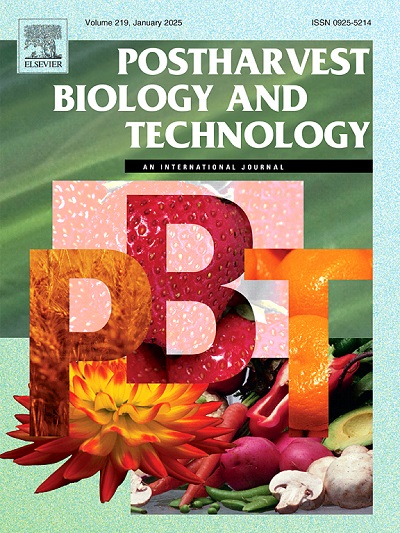The mechanism of the transcription factor ZjWRKY55 in regulating resistance to black spot rot in jujube fruit
IF 6.4
1区 农林科学
Q1 AGRONOMY
引用次数: 0
Abstract
Ziziphus jujuba, with its thin and crispy skin, sweet taste, and high economic and nutritional value, is a popular fresh fruit. Black spot rot, instigated by Alternaria alternata (A. alternata), stands as a primary post-harvest affliction impacting jujube. Compared to traditional fungicides, amino acid treatment as a biological control method is safer and environmentally friendly, without any harm to humans or the environment. Previous studies have shown that treating jujube fruit with methionine (Met) can enhance the enzymatic activity of lignin synthesis-related enzymes and increase the expression of transcription factors (TFs) such as ZjWRKY55, thereby improving the resistance of jujube fruit. This study mainly focuses on investigating the mechanism of how the transcription factor ZjWRKY55 regulates the resistance of jujube fruit. Transient overexpression of ZjWRKY55 in jujube significantly reduces the lesion diameter and incidence rate of black spot rot and significantly increases the lignin content in jujube fruit. RNA sequencing (RNA-seq) analysis of the transiently transformed samples reveals significant enrichment of differentially expressed genes involved in pathways such as sugar metabolism, amino acid metabolism, phenylpropane biosynthesis, and alpha-linolenic acid metabolism. Real-time fluorescence quantitative PCR (RT-qPCR) indicates upregulated expression of genes such as ZjCCoAOMT, ZjGAD, ZjCAD, ZjPER, and ZjBGLU. Dual-luciferase reporter (DLR) assays and electrophoretic mobility shift (EMSA) assays demonstrate that ZjWRKY55 can directly bind to the upstream promoters of ZjCCoAOMT and ZjGAD to activate their transcriptional expression and bind to the promoter of ZjKTI5 to downregulate its expression.
求助全文
约1分钟内获得全文
求助全文
来源期刊

Postharvest Biology and Technology
农林科学-农艺学
CiteScore
12.00
自引率
11.40%
发文量
309
审稿时长
38 days
期刊介绍:
The journal is devoted exclusively to the publication of original papers, review articles and frontiers articles on biological and technological postharvest research. This includes the areas of postharvest storage, treatments and underpinning mechanisms, quality evaluation, packaging, handling and distribution of fresh horticultural crops including fruit, vegetables, flowers and nuts, but excluding grains, seeds and forages.
Papers reporting novel insights from fundamental and interdisciplinary research will be particularly encouraged. These disciplines include systems biology, bioinformatics, entomology, plant physiology, plant pathology, (bio)chemistry, engineering, modelling, and technologies for nondestructive testing.
Manuscripts on fresh food crops that will be further processed after postharvest storage, or on food processes beyond refrigeration, packaging and minimal processing will not be considered.
 求助内容:
求助内容: 应助结果提醒方式:
应助结果提醒方式:


